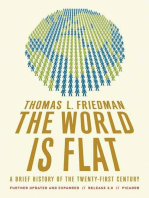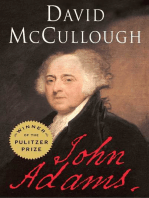Anjuman College of Engineering and Technology Design of Machine Elements'
Anjuman College of Engineering and Technology Design of Machine Elements'
Uploaded by
ZakyCopyright:
Available Formats
Anjuman College of Engineering and Technology Design of Machine Elements'
Anjuman College of Engineering and Technology Design of Machine Elements'
Uploaded by
ZakyOriginal Description:
Original Title
Copyright
Available Formats
Share this document
Did you find this document useful?
Is this content inappropriate?
Copyright:
Available Formats
Anjuman College of Engineering and Technology Design of Machine Elements'
Anjuman College of Engineering and Technology Design of Machine Elements'
Uploaded by
ZakyCopyright:
Available Formats
Anjuman college of Engineering and Technology
Mechanical Engineering Department
‘Design of Machine Elements’
UNIT IV: Clutch & Brakes
Clutch : A clutch is a machine member used to connect a driving shaft to a driven shaft so that the driven shaft may be
started or stopped without stopping the driving shaft. The use of a clutch is mostly found in automobiles in order to
change gears or to stop the vehicle, it is required that the driven shaft should stop, but the engine should continue to run. It
is, therefore, necessary that the driven shaft should be disengaged from the driving shaft.
Types of Clutches: 1. Positive clutches, and 2. Friction clutches
Positive clutch: The positive clutches are used when a positive drive is required. The simplest type of a positive clutch is
a jaw or claw clutch. The jaw clutch permits one shaft to drive another through a direct contact of interlocking jaws.
Friction Clutches:A friction clutch has its principal application in the transmission of power of shafts and machines
which must be started and stopped frequently. Its application is also found in cases in which power is to be delivered to
machines partially or fully loaded. In automobiles, friction clutch is used to connect the engine to the drive shaft. In
operating such a clutch, care should be taken so that the friction surfaces engage easily and gradually bring the driven
shaft up to proper speed.
Note:
The contact surfaces should develop a frictional force that may pick up and hold the load with reasonably low pressure
between the contact surfaces.
The heat of friction should be rapidly dissipated and tendency to grab should be at a minimum.
The surfaces should be backed by a material stiff enough to ensure a reasonably uniform
distribution of pressure
Material for Friction Surfaces:
1. It should have a high and uniform coefficient of friction.
2. It should not be affected by moisture and oil.
3. It should have the ability to withstand high temperatures caused by slippage.
4. It should have high heat conductivity.
5. It should have high resistance to wear and scoring
Types of Friction Clutches:
1. Disc or plate clutches (single disc or multiple disc clutch),
2. Cone clutches, and
3. Centrifugal clutches
Single Disc or Plate Clutch:
A single disc or plate clutch,
consists of a clutch plate whose both sides
are faced with a frictional material . It is
mounted on the hub which is free to move
axially along the splines of the driven shaft.
The pressure plate is mounted inside the
clutch body which is bolted to the
flywheel. Both the pressure plate and the
flywheel rotate with the engine crankshaft
or the driving shaft. The pressure plate
pushes the clutch plate towards the
flywheel by a set of strong springs which
are arranged radially inside the body.
When the clutch pedal is pressed down the
pressure plate moves away from the
flywheel by the knife edges, thereby
compressing the clutch springs. This action
removes the pressure from the clutch plate
and thus moves back from the flywheel and
the driven shaft becomes stationary. On the
other hand, when the foot is taken off from
the clutch pedal, the pressure plate pushes
the clutch plate back towards the flywheel
Multi plate Clutch:
A multiple disc clutch, may be
used when a large torque is to be
transmitted. The inside plates are fastened
to the driven shaft to permit axial motion.
The outside discs are held by bolts and
are fastened to the housing which is keyed
to the driving shaft. The multiple disc
clutches are extensively used in motor
cars, machine tools etc. (working similar
as single plate clutch).
Considerations in Designing a Friction Clutch:
1. The suitable friction material should be selected.
2. The moving parts of the clutch should have low weight in order to minimise the inertia load.
3. The clutch should not require any external force to maintain contact of the friction surfaces.
4. The provision for taking up wear of the contact surfaces must be provided.
5. The clutch should have provision for facilitating repairs.
6. The clutch should have provision for carrying away the heat generated at the contact surfaces.
7. The projecting parts of the clutch should be covered by guard.
You might also like
- The Subtle Art of Not Giving a F*ck: A Counterintuitive Approach to Living a Good LifeFrom EverandThe Subtle Art of Not Giving a F*ck: A Counterintuitive Approach to Living a Good LifeRating: 4 out of 5 stars4/5 (5891)
- The Gifts of Imperfection: Let Go of Who You Think You're Supposed to Be and Embrace Who You AreFrom EverandThe Gifts of Imperfection: Let Go of Who You Think You're Supposed to Be and Embrace Who You AreRating: 4 out of 5 stars4/5 (1103)
- Never Split the Difference: Negotiating As If Your Life Depended On ItFrom EverandNever Split the Difference: Negotiating As If Your Life Depended On ItRating: 4.5 out of 5 stars4.5/5 (870)
- Grit: The Power of Passion and PerseveranceFrom EverandGrit: The Power of Passion and PerseveranceRating: 4 out of 5 stars4/5 (597)
- Hidden Figures: The American Dream and the Untold Story of the Black Women Mathematicians Who Helped Win the Space RaceFrom EverandHidden Figures: The American Dream and the Untold Story of the Black Women Mathematicians Who Helped Win the Space RaceRating: 4 out of 5 stars4/5 (912)
- Shoe Dog: A Memoir by the Creator of NikeFrom EverandShoe Dog: A Memoir by the Creator of NikeRating: 4.5 out of 5 stars4.5/5 (543)
- The Hard Thing About Hard Things: Building a Business When There Are No Easy AnswersFrom EverandThe Hard Thing About Hard Things: Building a Business When There Are No Easy AnswersRating: 4.5 out of 5 stars4.5/5 (352)
- Elon Musk: Tesla, SpaceX, and the Quest for a Fantastic FutureFrom EverandElon Musk: Tesla, SpaceX, and the Quest for a Fantastic FutureRating: 4.5 out of 5 stars4.5/5 (474)
- Her Body and Other Parties: StoriesFrom EverandHer Body and Other Parties: StoriesRating: 4 out of 5 stars4/5 (830)
- The Sympathizer: A Novel (Pulitzer Prize for Fiction)From EverandThe Sympathizer: A Novel (Pulitzer Prize for Fiction)Rating: 4.5 out of 5 stars4.5/5 (122)
- The Little Book of Hygge: Danish Secrets to Happy LivingFrom EverandThe Little Book of Hygge: Danish Secrets to Happy LivingRating: 3.5 out of 5 stars3.5/5 (414)
- The Emperor of All Maladies: A Biography of CancerFrom EverandThe Emperor of All Maladies: A Biography of CancerRating: 4.5 out of 5 stars4.5/5 (272)
- The Yellow House: A Memoir (2019 National Book Award Winner)From EverandThe Yellow House: A Memoir (2019 National Book Award Winner)Rating: 4 out of 5 stars4/5 (99)
- The World Is Flat 3.0: A Brief History of the Twenty-first CenturyFrom EverandThe World Is Flat 3.0: A Brief History of the Twenty-first CenturyRating: 3.5 out of 5 stars3.5/5 (2270)
- Devil in the Grove: Thurgood Marshall, the Groveland Boys, and the Dawn of a New AmericaFrom EverandDevil in the Grove: Thurgood Marshall, the Groveland Boys, and the Dawn of a New AmericaRating: 4.5 out of 5 stars4.5/5 (269)
- Team of Rivals: The Political Genius of Abraham LincolnFrom EverandTeam of Rivals: The Political Genius of Abraham LincolnRating: 4.5 out of 5 stars4.5/5 (235)
- A Heartbreaking Work Of Staggering Genius: A Memoir Based on a True StoryFrom EverandA Heartbreaking Work Of Staggering Genius: A Memoir Based on a True StoryRating: 3.5 out of 5 stars3.5/5 (232)
- College Physics 11th Edition Serway Test BankDocument37 pagesCollege Physics 11th Edition Serway Test Bankrussellarnoldmbgzcoqiyd100% (32)
- Full Download Book Roarks Formulas For Stress and Strain 9Th Ed PDFDocument51 pagesFull Download Book Roarks Formulas For Stress and Strain 9Th Ed PDFguy.mcmullin425100% (36)
- On Fire: The (Burning) Case for a Green New DealFrom EverandOn Fire: The (Burning) Case for a Green New DealRating: 4 out of 5 stars4/5 (74)
- The Unwinding: An Inner History of the New AmericaFrom EverandThe Unwinding: An Inner History of the New AmericaRating: 4 out of 5 stars4/5 (45)
- PowerFlex 4 (User Manual)Document104 pagesPowerFlex 4 (User Manual)xixiaucamru90% (10)
- Srno Application Name Father Name Scheme Name Course Name Application Renewed or NotDocument5 pagesSrno Application Name Father Name Scheme Name Course Name Application Renewed or NotZakyNo ratings yet
- Rashtrasant Tukadoji Maharaj Nagpur UniversityDocument5 pagesRashtrasant Tukadoji Maharaj Nagpur UniversityZakyNo ratings yet
- Press Working Operation NOTESDocument6 pagesPress Working Operation NOTESZakyNo ratings yet
- Form Scholarship 2020 21 eDocument2 pagesForm Scholarship 2020 21 eZakyNo ratings yet
- Dome-Unit 1. Machine DesignDocument6 pagesDome-Unit 1. Machine DesignZakyNo ratings yet
- DME Unit 2 WELD QuestionDocument2 pagesDME Unit 2 WELD QuestionZakyNo ratings yet
- Knuckle Joint NumericalDocument3 pagesKnuckle Joint NumericalZakyNo ratings yet
- EC-I Unit 2 Q Bank 2021-22Document2 pagesEC-I Unit 2 Q Bank 2021-22ZakyNo ratings yet
- LAS With Lectures in Gen Chem 2 4th GP School FormatDocument10 pagesLAS With Lectures in Gen Chem 2 4th GP School FormatMelanie ArangelNo ratings yet
- V10311 S6eaq10 007 4 3F SW 150 GaDocument1 pageV10311 S6eaq10 007 4 3F SW 150 GaMohamed MoussaNo ratings yet
- Statistic: Gauss-Fit (D 4.00 Sigma 1/e 2)Document1 pageStatistic: Gauss-Fit (D 4.00 Sigma 1/e 2)huang williamNo ratings yet
- 12th Chemistry 1 ScoreboosterDocument187 pages12th Chemistry 1 ScoreboosterNair SidharthNo ratings yet
- Podar International School Yearly Examination (2020-21) Grade: VIII Group 2 Maximum Marks: 80 Subject: Mathematics Duration: 300 MinsDocument13 pagesPodar International School Yearly Examination (2020-21) Grade: VIII Group 2 Maximum Marks: 80 Subject: Mathematics Duration: 300 MinsEphraim Satalolu85% (13)
- Ix Maths Weekly AssessmentDocument5 pagesIx Maths Weekly AssessmentSrinivasanNo ratings yet
- Eric Dollard PDFDocument2 pagesEric Dollard PDFYung100% (1)
- CHAPTER 1 Complex Number SlideDocument51 pagesCHAPTER 1 Complex Number SlideNOR EJATI BINTI DORA STUDENTNo ratings yet
- Chapter 12 Simple Harmonic Motion and Waves: Section 12.1 Hooke's LawDocument12 pagesChapter 12 Simple Harmonic Motion and Waves: Section 12.1 Hooke's LawMarcial Aguilar BarahonaNo ratings yet
- Chemistry (88) Class 11th Dpp-1chaper 1Document2 pagesChemistry (88) Class 11th Dpp-1chaper 1Harsh AgarwalNo ratings yet
- GE AuroraH2O ManualDocument144 pagesGE AuroraH2O Manualolam taufiqNo ratings yet
- Topic 10 Ideal GasesDocument12 pagesTopic 10 Ideal GasesRichie ZhangNo ratings yet
- Varendra University Dept. of CSE: Course Title: Electronic Devices and Circuits Lab Course Code: CSE 224Document5 pagesVarendra University Dept. of CSE: Course Title: Electronic Devices and Circuits Lab Course Code: CSE 224Arnob MustakimNo ratings yet
- Design of Reinforced Concrete StructureDocument83 pagesDesign of Reinforced Concrete StructurekarthiksampNo ratings yet
- Fundamentals of Electric Circuits 2 - Midterm Lec ExamDocument13 pagesFundamentals of Electric Circuits 2 - Midterm Lec Examtancontianjhonmark12No ratings yet
- The Proton and Its Resonances NPP2.3Document46 pagesThe Proton and Its Resonances NPP2.3wyttenbachNo ratings yet
- Rahul Kumar Compiled MixDocument178 pagesRahul Kumar Compiled MixAnujNo ratings yet
- Design For Additive Manufacturing From A Force-Flow PerspectiveDocument22 pagesDesign For Additive Manufacturing From A Force-Flow PerspectiveJon SnowNo ratings yet
- SHM-02-15-2024-09-37-07-794 AmDocument5 pagesSHM-02-15-2024-09-37-07-794 Amyashvi.jain0507No ratings yet
- Fluorosilicic in WaterDocument7 pagesFluorosilicic in WatertrucbeoNo ratings yet
- AUTO LENSOMETRO ALM500 - ManualDocument46 pagesAUTO LENSOMETRO ALM500 - ManualAsesorías y Servicios Efectivos SASNo ratings yet
- Iso 8318 - 2000Document10 pagesIso 8318 - 2000ΘΕΟΔΩΡΟΣ ΣΤΕΦΑΝΟΥNo ratings yet
- Concrete Midi BlocksDocument1 pageConcrete Midi BlocksAjdinNo ratings yet
- Fixed Mount Traffic Signal Arm Clamp-On Traffic Signal Arm: General NotesDocument5 pagesFixed Mount Traffic Signal Arm Clamp-On Traffic Signal Arm: General NotesHamid YaghoubiNo ratings yet
- The Nano World Final... AcooonnnnnnDocument17 pagesThe Nano World Final... AcooonnnnnnHarold AbutNo ratings yet
- Review On The Application of Organic Fibers As Substitutes ForDocument18 pagesReview On The Application of Organic Fibers As Substitutes ForForsythe LearningNo ratings yet
- Concept Map RationaleDocument2 pagesConcept Map Rationaleapi-504429100No ratings yet














































































